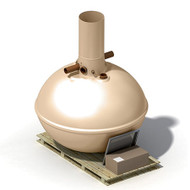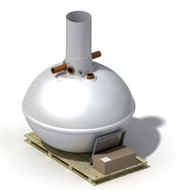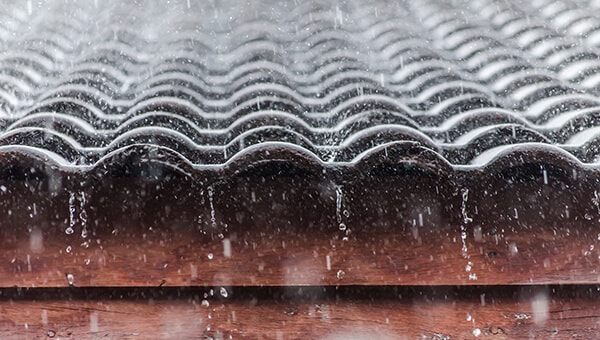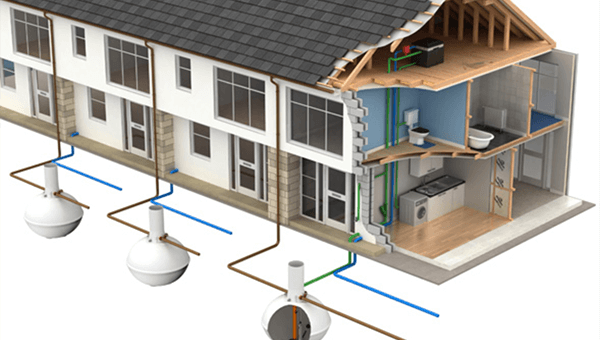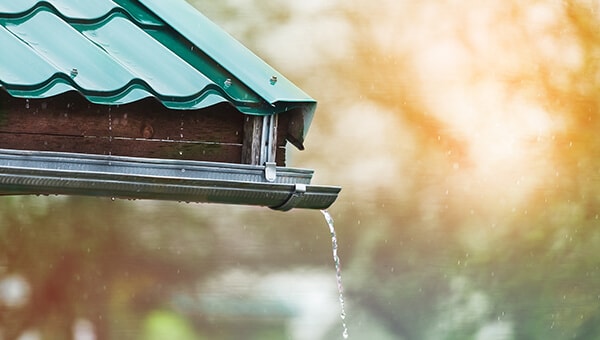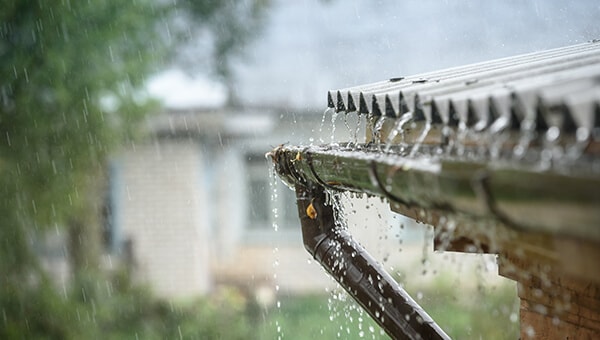Rainwater harvesting is not a new concept, but it is becoming more popular as public awareness shifts more towards the need for environmental sustainability. But with so many options available, how do you choose which system is right for you? We believe the best place to start is to decide whether you need an Above Ground or Below Ground Rainwater Harvesting Tank.
What is rainwater harvesting?
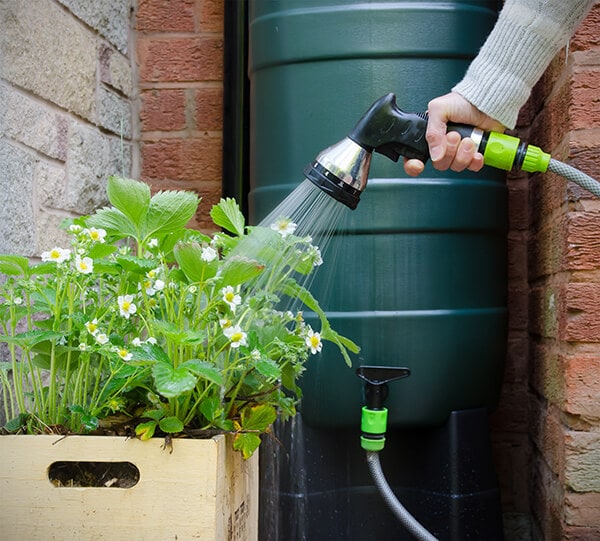
Rainwater harvesting is the method by which water from roofs and hard standings is collected, filtered and stored for later use. In its simplest form, a Rainwater Harvesting System comprises of a Water Butt connected to a downspout, to collect rainwater from a house’s guttering. Add a watering can to this system and you have a cheap way of watering your garden.
However, new technology allows for more complex Rainwater Harvesting Systems to be plumbed into your home’s existing pipework. This then enables you to use the collected rainwater for flushing toilets and washing clothes etc, reducing your mains water consumption by up to 50% (according to the UK Rainwater Harvesting Association).
Aside from the potential cost savings these systems can provide, other benefits including:
- Energy savings – reducing the amount of mains water that has to be treated and pumped to your house.
- Reduced risk of water shortage – alleviates the pressure on the mains supply during summer months.
- Reduced risk of flooding – holding stormwater run-off that would otherwise go directly into the drains.
- Can be turned into drinking water - if a suitable filtration system is fitted that can remove particles larger than 5 microns and sterilise the water with ultraviolet light.
- An excellent water source for your garden– free of chemicals such as fluoride and chlorine that are used to treat mains water.
- Better for your laundry rainwater is “soft” water, making it ideal for laundry as it can eliminate the need for conditioners.
For more information about why you should install a Rainwater Harvesting System, check out our "What is rainwater harvesting and why is it important?" article.
Still with us? Good! You’re on your way to a future where you can help to save the planet whilst also saving money at the same time. But we still don’t know what type of Rainwater Harvesting System you need. Well, that largely depends on what you intend to use the harvested water for and how big your garden is. Let’s take a look at the options available, starting with Above Ground Rainwater Harvesting Systems.
Above Ground Rainwater Harvesting
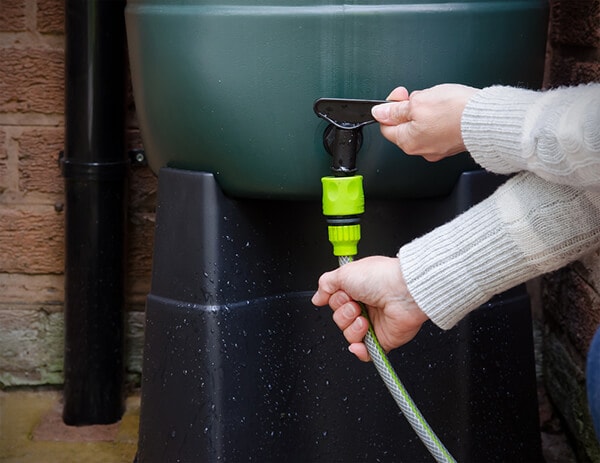
Whether we’re talking about the traditional green plastic tank tucked away in a corner of the garden, or a more modern stylish tank designed to look like a terracotta pot, these are the simplest forms of rainwater harvesting available. Situate the tank close to a downspout from your guttering and then use a rainwater harvesting kit to connect it up and start collecting the water run-off from your roof.
However, they aren’t just limited to domestic use applications. With water storage tanks up to a 30,000 litre capacity, above ground rainwater harvesting systems can also be ideal for agricultural some commercial uses too. From dairy washdown to pressure washers, the water collected in these tanks can be used for a multitude of non-potable applications.
The benefits of these systems include:
- Easy to install – basic DIY tools and know-how is all that’s needed.
- Easy to maintain – being above ground, the tank is accessible making it quick to troubleshoot and repair any problems.
- Cheaper than below ground systems – both to purchase and install.
- Requires zero ground works – assuming you have a flat, stable surface to place the tank on.
- Ideal for your garden – keep your plants watered even during hosepipe bans.
- A silver lining on rainy days – watch the savings fall from the sky and into your storage tank.
There are, however, some disadvantages to above ground storage that need to be considered. Predominantly, it is their exposure to the environment and the elements that can cause problems. Unless adequately protected, the water collected in these tanks can freeze during the winter and get very hot during the summer. If you don’t regularly clean out your water tank and insulate it to prevent the water temperature from increasing in warm weather, bacteria such as Legionella can grow to potentially harmful levels in the standing water.
An easy way to avoid these issues, whilst still reaping the benefits of harvested rainwater, is to install a Below Ground Rainwater Harvesting System instead.
Below Ground Rainwater Harvesting
Do you have space in your garden for a large water tank? No? What about below it? If you are of the mindset that a job worth doing is worth doing right, and aren’t against digging up the lawn in the interests of doing so, then a Below Ground Rainwater Harvesting system might be for you.
These systems are usually fully integrated into the property, meaning that they are connected up to existing pipework and can be used to feed water to almost any non-potable domestic application, such as toilet flushing and washing machines. They can also be connected up to sprinkler systems and external taps in your garden to further eliminate your dependence on mains water supply.
Whilst a below ground tank initially requires more work and cost to install, they do come with a number of benefits that make them a worthwhile investment. These include:
- Aesthetic appeal – no big plastic tank detracting from the look of your garden.
- Space-saving – these tanks don’t take up any above ground space, which is a bonus if you have a small garden or difficult neighbours that complain about structures blocking their view of your garden.
- Guaranteed supply of water - systems fitted with a mains back up can automatically switch over to mains supply when the level of stored water reaches a critical low point.
- Protected against the elements – no need to worry about the stored water freezing as the tank is naturally insulated underground.
- Ideal for your garden – keep your plants watered even during hosepipe bans.
- Maintain a constant temperature – being stored in a cool dark environment means that the water can be kept at a consistent temperature all year round, which helps to eliminate the conditions that can encourage the growth of harmful bacteria.
- Ideal for your home & garden - keep your garden green and your washing clean with water that is free of mains supply chemicals.
Of course, there are also some disadvantages to installing an underground system instead of an aboveground system. First and foremost of these is the need to dig a large hole in your garden to install the tank, ensure it is reinforced and backfill the space. Not only can this be costly, but it can also be very disruptive and destructive if you already have a well-established landscaped garden for example. These tanks, by default of being buried out of sight, can also be difficult to maintain. Unless properly installed, they can be subject to shifting and settling of the soil which can lead to cracks. These cracks can then be difficult to detect and repair. It is worth noting that certain types of soil, such as soil with high clay content, are not suitable for underground tank installations.
These issues can all be avoided however if the integrated rainwater harvesting system is incorporated into a property at the construction stage. This then makes them a much more cost-effective option and can aid in planning applications.
In Summary
With clear pro’s and con’s for both types of storage tank, the choice between above and below ground systems ultimately comes down to three questions:
- What do I need the water for?
- Do I have space for an above ground tank?
- Can I afford the cost and disruption of installing a below ground tank?
If you just want to keep your garden watered or wash your car without it impacting your water bill, or the thought of digging up a chunk of your garden is too much of a headache, then perhaps a simple above ground system is what you need.
Check out our article "What size rainwater tank do I need?" to take the final step in your decision making process.
If, however, you want to really harvest the benefits that rainwater collection can provide, and don’t mind the extra cost and groundworks, then you probably want to consider a below ground tank that can be integrated into your home. These systems can even be fitted with special filters to make the water safe to drink, further cutting your need to draw from the mains supply.
Considering one of our Integrated Rainwater Harvesting Systems? They do come with a further choice for you to make…Direct feed or Gravity feed? For more information about this, and for help deciding which system is best for you, check out our “Rainwater Harvesting – Gravity or Direct?” article, which discusses the differences between them.
JDP has a wide range Rainwater Harvesting Systems available, and our team is always ready to answer any of your questions and offer advice if you need help choosing the right one for your project. Contact us today to discuss any of your Rainwater Harvesting needs!


